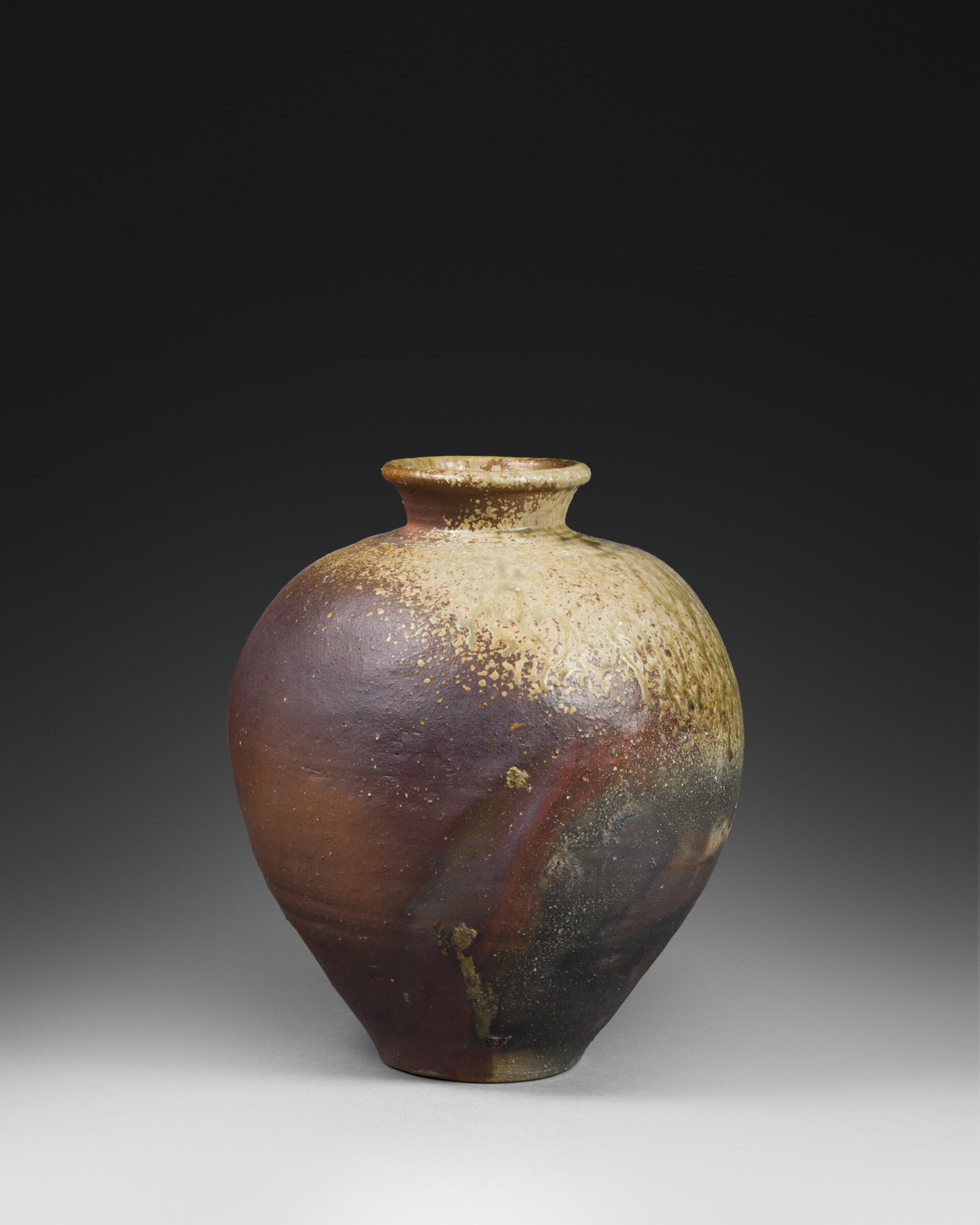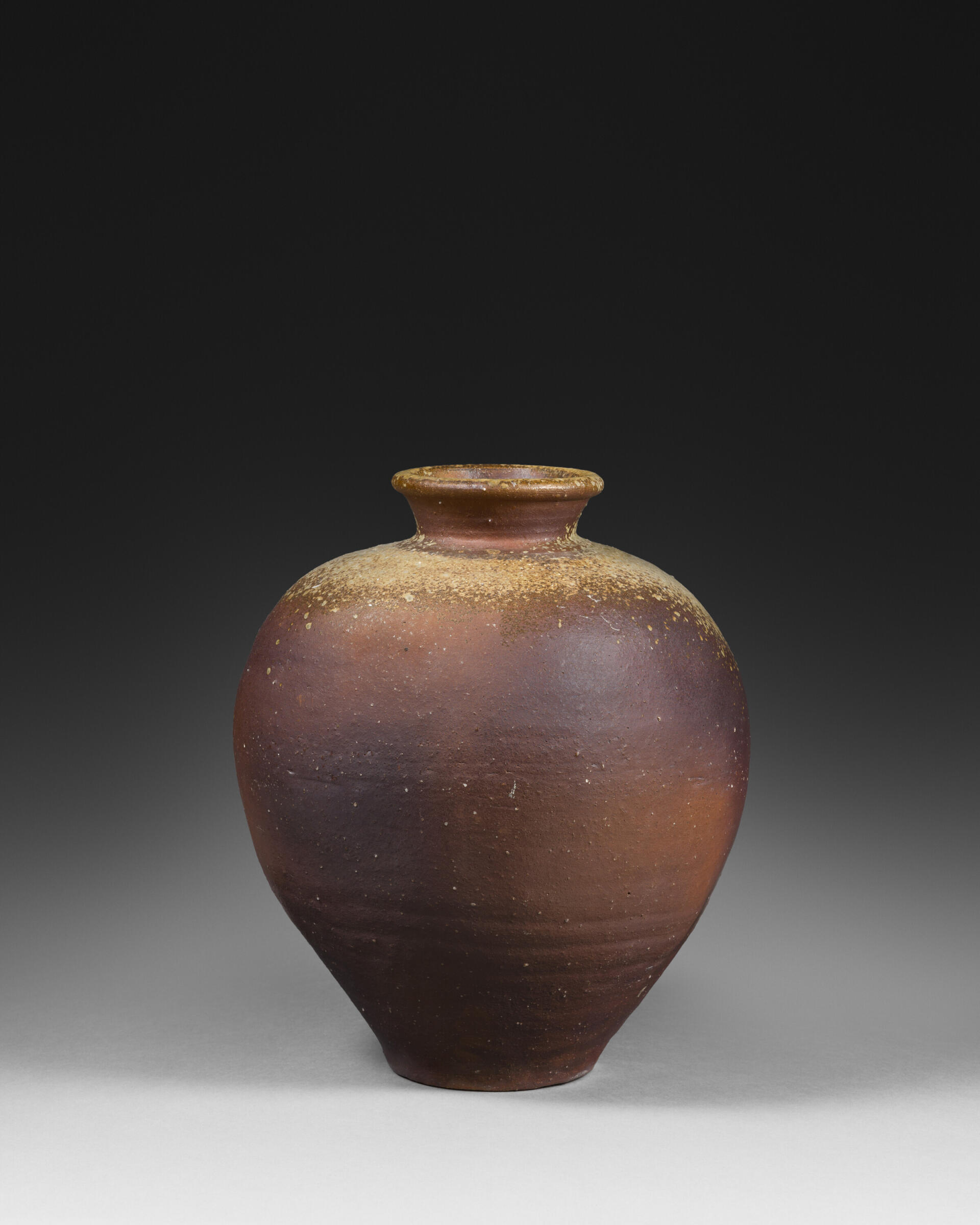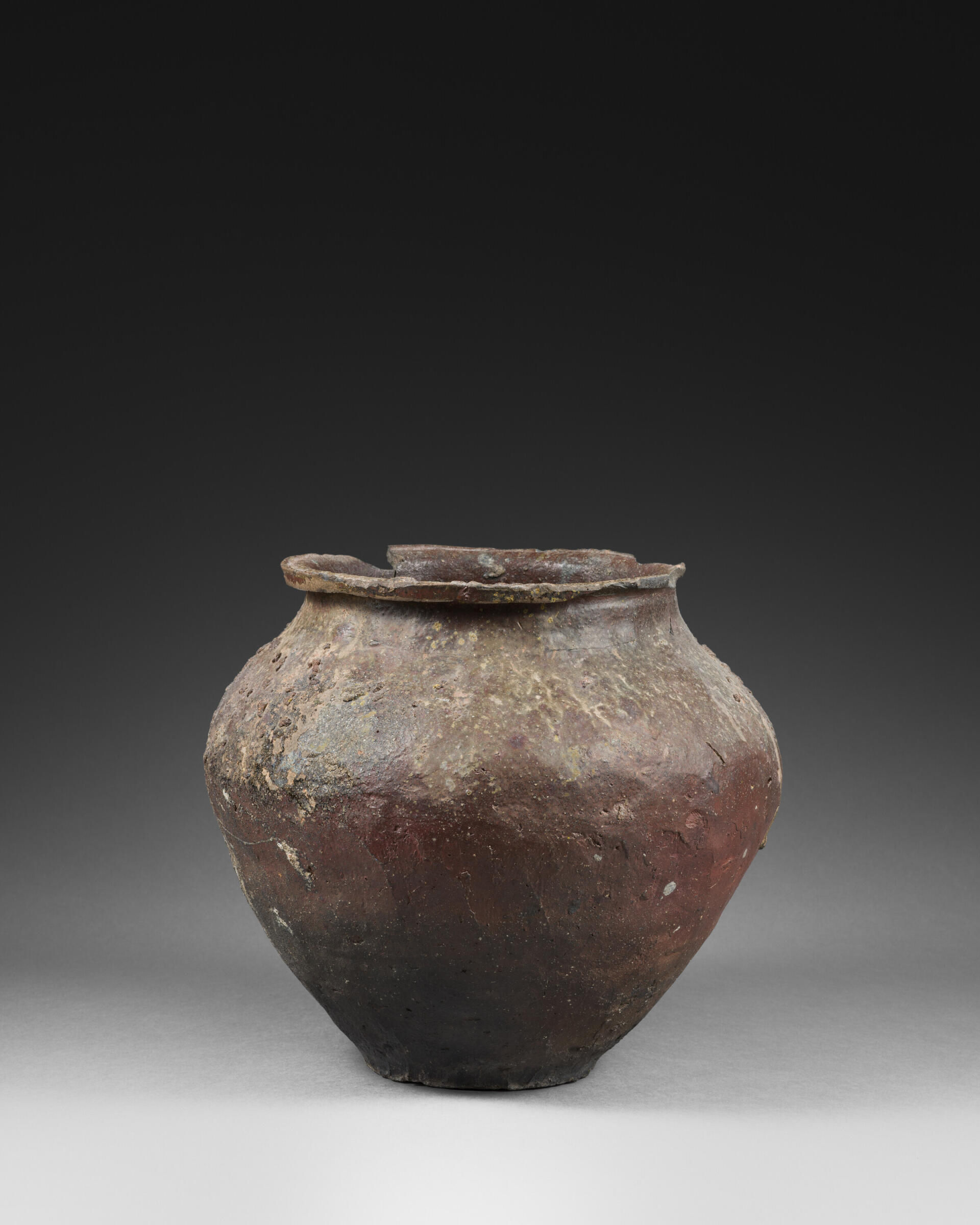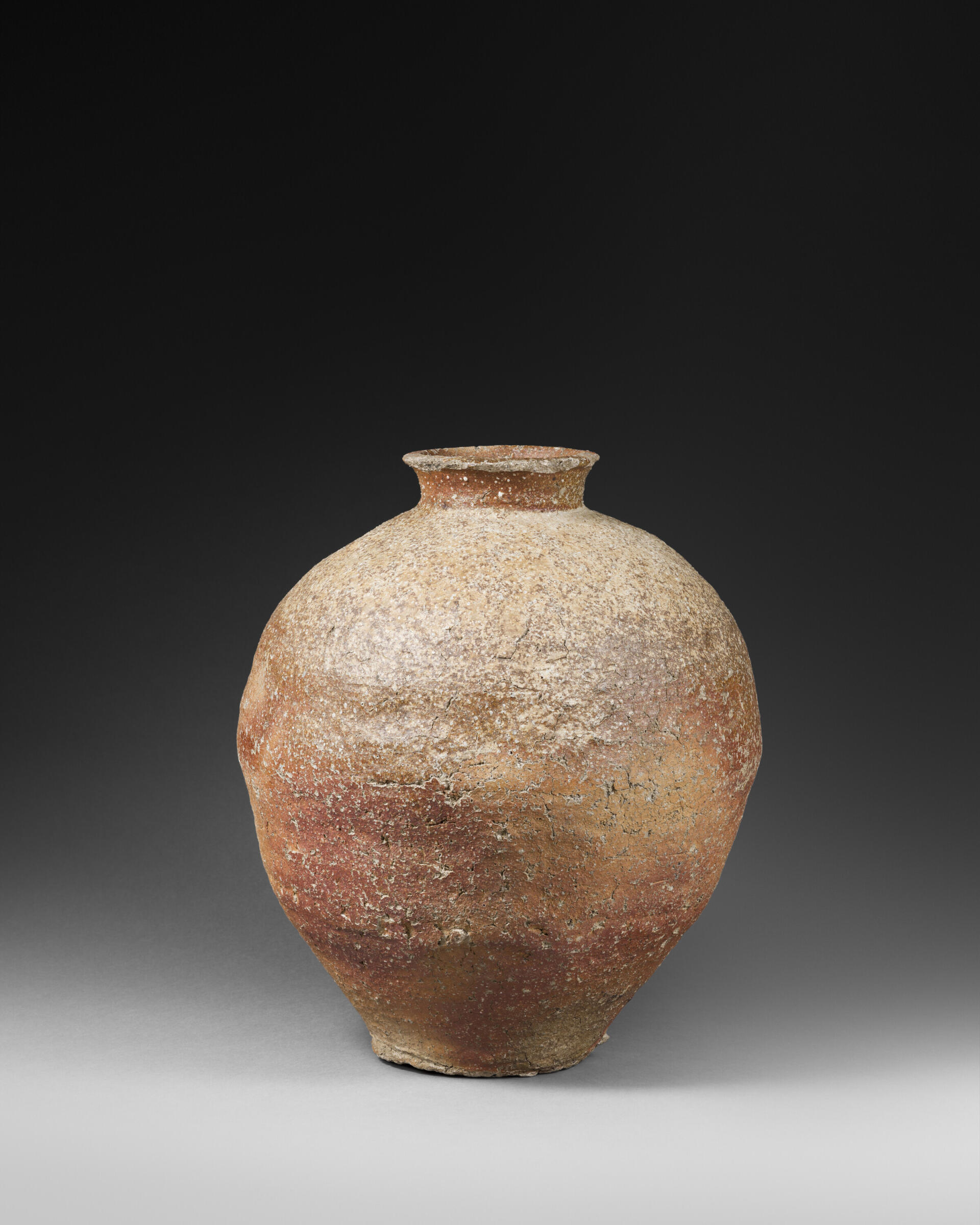
Johan Creten’s Collection of Japanese Ceramics


“Rejecting the whiteness and regularity of porcelain, Johan Creten likes ceramics in which man confronts the forces of nature. Coiling, wood firing and random surface effects are elements through which the potter expresses both his submission to the elements and his domination of them. The fire-hardened Japanese stoneware pieces conceal their beauty beyond their appearance and reveal it at the end of a meticulous process.


Japanese ceramics, one of the most ancient ceramic cultures in the world (dating from about 15,000 years ago), was fashioned by men and women who lived in symbiosis with nature and were subjected to its dangerous vagaries which, in that region of the world, often have dire consequences. These men and women invented a rich stylistic vocabulary with which to conceive figurines and recipients with deep engravings and embossed motifs, fired at a low temperature (Jômon period, around 1,500–1,000 BCE).



However, in the Middle Ages (twelfth century), the specificities of a unique ceramic culture took shape, marked by the prevalence of the art of stoneware. The jars then reflected agricultural and economic developments. They found their place in the kitchens and the countryside. Capable of containing grain or water, the wide-mouthed jar (kame) that emerged from the kilns of Tokoname (thirteenth century) was coiled in an iron-rich clay that could be baked at a rather moderate temperature in a wood-fired kiln built on the hillside (anagama). The ashes mixed in with fragments from the arch of the kiln give it a singular, sculptural aspect.


The potters of the great medieval kilns (twelfth–fourteenth centuries) often limited their engravings, impressions or decorative interventions: they preferred to let nature play that role. The volatile wood ashes in the kiln during the firing fell back onto the pieces most exposed to the fire, thereby creating a natural coat. Much appreciated and later recreated purposefully, these ‘accidents’ run down the sides of the jars, forming a colourful drip, of a blue, green or yellowish colour. This drip runs down to the base, where it congeals in the shape of glass pearls. The abundant superpositions of glazes on jars from the kilns of Echizen bear witness to the fondness of the Japanese for these decors.



From the fifteenth century onward, amateurs of the tea ceremony elevated these sober and unsophisticated recipients, giving them a new use, and commissioning tea utensils from the kilns of Shigaraki, and later from those of Iga: two manufacturing centres separated by a mountain from which different clays were extracted. Once fired, the whitish clay of Shigaraki, which contains feldspar and silica, takes on an orangey red hue dotted with ‘stone fragments’ (ishihaze) due to the feldspar. That of Iga, less rich in feldspar but full of iron, takes on a reddish brown colour. The wood ashes from the firing mix with the clay’s feldspar to create thick drips of natural green glaze flowing on the irregular surface. Using these effects, the so-called rice-cake (sembei) pot, very popular in the late seventeenth and in the eighteenth century, adapts on a larger scale the streamlined shape of the recipients for the tea powder (cha-ire) of the tea ceremony.


These pieces of unglazed stoneware (yakishime) from Shigaraki inspired many potters, like Ogawa Tokusai (1785–1865) in the nineteenth century. To this day, some potters perpetuate this tradition, making the clay resonate with the various colours of the natural glazes.”


